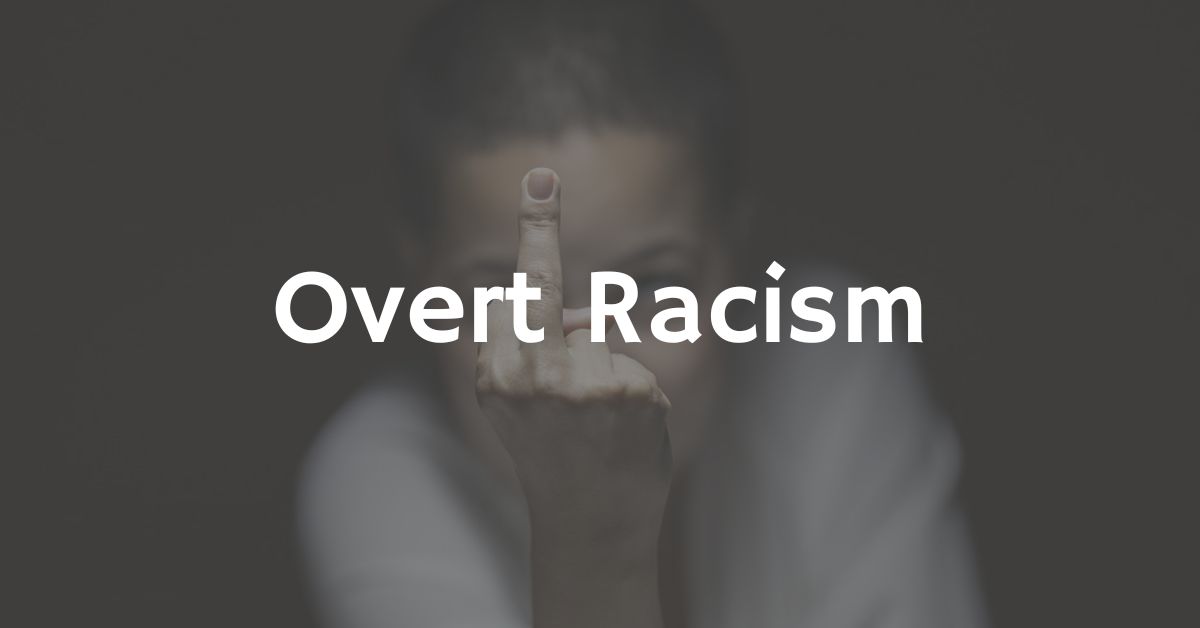Understanding Overt Racism: Definition, Examples, and Impact
What is Overt Racism?
Overt racism refers to explicit and intentional acts of racial discrimination that are openly displayed. Unlike covert racism, which operates subtly and often goes unnoticed, overt racism is direct, visible, and rooted in clear racial prejudice. This form of racism includes actions, statements, or policies that openly target individuals or groups based on their race, perpetuating inequality and fostering a culture of hatred and division.
Key Characteristics of Overt Racism
- Explicit and Intentional: Overt racism involves deliberate actions or statements that express racial bias.
- Visible and Direct: It is easily recognizable and often publicly displayed.
- Harmful and Divisive: Overt racism creates a hostile environment and reinforces systemic inequalities.
Examples of Overt Racism
Racial Slurs and Hate Speech
One of the most blatant forms of overt racism is the use of racial slurs or hate speech. This includes derogatory language, insults, or threats directed at individuals or groups based on their race. Such language is intentionally harmful and seeks to demean and dehumanize its targets.
Discriminatory Policies and Practices
Overt racism can also manifest through institutional policies that explicitly favor one racial group over another. Examples include:
- Segregation Laws: Historical policies like Jim Crow laws in the United States, which enforced racial segregation in public spaces.
- Voter Suppression: Modern practices that disproportionately affect minority communities, such as strict ID laws or gerrymandering.
Violent Acts and Hate Crimes
Overt racism often escalates to physical violence or hate crimes. Examples include:
- Lynchings: Historically, lynchings were used as a tool of racial terror against Black communities.
- Hate Crimes: Acts of violence, vandalism, or intimidation motivated by racial bias, such as attacks on places of worship or racially motivated assaults.
Workplace Discrimination
In professional settings, overt racism can take the form of blatant exclusion or mistreatment. Examples include:
- Refusing to Hire or Promote: Employers openly rejecting candidates or employees based on their race.
- Hostile Work Environments: Colleagues or supervisors making openly racist remarks or engaging in discriminatory behavior.
Public Displays of Racism
Overt racism is often displayed publicly through symbols, gestures, or actions that promote racial hatred. Examples include:
- Confederate Flags: Displaying symbols associated with racial oppression and slavery.
- White Supremacist Rallies: Organized events that promote racial superiority and exclusion.
The Impact of Overt Racism
Psychological and Emotional Effects
Overt racism inflicts deep psychological and emotional wounds on its victims. The direct and intentional nature of these acts can lead to feelings of fear, anger, and helplessness. Over time, repeated exposure to overt racism can result in chronic stress, anxiety, and depression, significantly impacting mental health.
Social and Community Division
Overt racism fosters division within communities by promoting an “us versus them” mentality. It creates an environment of mistrust and hostility, making it difficult for diverse groups to coexist peacefully. This division undermines social cohesion and weakens the fabric of society.
Reinforcement of Systemic Inequality
Overt racism reinforces systemic inequalities by legitimizing discriminatory practices and attitudes. When racist actions or policies are openly tolerated or ignored, they perpetuate cycles of disadvantage for marginalized groups, limiting their access to opportunities and resources.
Addressing Overt Racism
Education and Awareness
Combating overt racism begins with education. Schools, workplaces, and communities must prioritize teaching about the history and consequences of racism. Awareness campaigns can help people recognize and challenge overtly racist behaviors and attitudes.
Legal and Policy Reforms
Governments and institutions must enact and enforce laws that prohibit overtly racist practices. This includes strengthening hate crime legislation, ensuring fair hiring practices, and eliminating discriminatory policies.
Community Solidarity
Building solidarity within communities is essential for addressing overt racism. This involves creating safe spaces for dialogue, supporting victims of racism, and standing together against acts of hatred and discrimination.
Conclusion
Overt racism is a destructive force that harms individuals, divides communities, and perpetuates systemic inequality. By understanding its definition, recognizing its examples, and acknowledging its impact, we can take meaningful steps to combat it. Through education, legal reforms, and community solidarity, we can work toward a society that values equality, justice, and respect for all.

